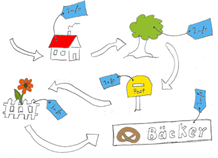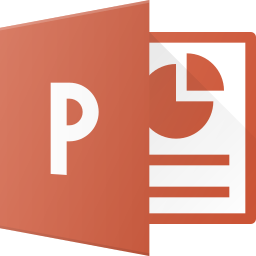
Training content development
Memory is a cognitive function that we use constantly and that contributes to shape our personal identity. Many activities depend on it such as reading, reasoning, calculations and in general all our learning capacity. Memory is the function of the brain that allows us to process external stimuli, retain them and then store them for a long time or forever. It is also the ability that allows us to recover that information as a memory when we need it. Over time, like many body functions, memory also undergoes a decline in the level of performance. In particular, short-term memory loses its ability to retain information that comes through external stimuli, so less information can be retained and stored in long-term memory.
There are different ways in which the information we need to remember can be processed, but the simple intention of remembering is unlikely to help us, since the passive, mechanical and repetitive use of memory, without exploiting its strategic potential, doesn’t help that much with the effective processing of the material to remember.
That’s why we often do something intentional and conscious to help us remember, or in other words, we implement memory strategies. Mnemonics are memorization techniques that facilitate the storage and retrieval of information, known and used by humans more than 2000 years ago and handed down over the centuries by the Greeks and then by the Romans. Aristotle and Plato laid the foundations of this art when they formalized the concept of “thinking in images”. The techniques we know today exploit the brain’s ability to better remember images rather than spoken words.
The use of mnemonics in the field of aging arises from the hypothesis that memory deficits are caused, not only by normal biological aging, but also by metacognitive and strategic deficits that can be overcome, in part, with appropriate training.
Mnemonics are real mental strategies that favor the memorization of names, numbers, actions to be performed and individual information. They exploit the natural ability of the human being to better remember information when it is transformed into images or stories, or associated with paradoxical events or emotions, thus increasing the natural capacity of human memory.
The exercises proposed in this module intend to work on visual-spatial and auditory memory and exercise the ability to remember more information for a certain period of time.
Based on the type and amount of information to be stored, it is possible to categorize the different methods into three groups:
- methods that improve the memory of single items: the loci method, the creation of mental images, the link method, the peg-system, categorization;
- methods that improve the memory of names: the face-name technique;
- methods that improve the memory of numbers: the number-consonant system.
In particular, in this module we will focus mainly on techniques to strengthen the ability to remember a series of information and to link them together.
LOCI METHOD
It is one of the best known and oldest techniques. It is used to memorize single items in sequence such as the shopping list or the actions to be performed during the day. We proceed with the creation of a sequence of places (loci), better if well known (such as all the places I meet on the way from home to work). This sequence is fundamental and, for the strategy to be useful, it must be learned perfectly. In the phase of memorizing, the first item to remember must be associated with the first place on the list, the second item with the second place and so on. When I have to recall the material, I will have to mentally retrace the sequence of places starting from the first, which constitutes the cue (the hook) and which will favor the memory of the first item, and proceeding in the same way up to the last place to remember the last item .
METHOD OF CATEGORIZATION (CHUNKING)
This method is based on grouping more information into related categories to facilitate its memorization. It is a technique that we often already use in daily life, for example when we group the digits of a phone number to remember it more easily or when making the shopping list, we group products by categories (fruit, vegetables, cereals, etc.)
It consists in breaking down large pieces of content into smaller chunks that are easier to process and remember. Chunking is essentially the categorization of similar or connected items into groups that can be scanned or understood faster and retained in memory for longer. The concept behind chunking, as established by the Harvard Psychologist George A. Miller, is that the human mind can only retain an average of seven pieces of information at a time. Chunking is a way to get around that natural limitation of memory.
CREATION OF MENTAL IMAGES
It is a basic coding skill that requires fewer cognitive resources than the loci technique. It consists in the formation of very vivid mental scenarios to allow the information to be remembered.
LINK METHOD
Like the previous technique, this also requires less cognitive expenditure and consists in associating each item in the list with the previous one. This strategy, along with that of images, can also be used to form interactive images of multiple items instead of imagining one at a time.
Description
Memory is a function that tends to weaken with age. In particular, the ability to retain and preserve new information, but also the ability to retrieve it as a memory when we need it decreases over time. However, it is possible to some extent, to keep the mind trained with some exercises.
We often do something intentional and conscious to help us remember. In other words, we make use of some memory strategies, also called “mnemotecniques”. Mnemonics are memorization techniques that facilitate the storage and retrieval of information. The systematic use of these strategies allows to obtain improvements in memory performance in a short time.
This module includes a series of exercises that use different mnemonics based on the type and quantity of information to be processed. The aim is to strengthen short-term memory and the ability to hold more information at the same time.
The exercises are in the form of different batteries of interactive mini-games with increasing skill levels.
Learning Outcomes / Objectives
By the end of this module:
- you will learn a technique to strengthen your ability to memorize and retain more information through associations and links between them;
- you will be able to use this technique to complete some daily tasks more easily, such as remembering what to buy at the supermarket, memorizing a phone number, etc.
- you will have a better understanding of how memory works and how it is possible to keep it trained like a muscle;
The following skills will also be enhanced:
- create meaningful associations between more information in order to remember them more easily;
- remembering things and objects that are seen and locate them in the space;
Wrap up
Memory with advancing age undergoes a decline in its performance, especially in the ability to memorize and recall. However, there are techniques, used since ancient times, which are able to bypass the physical limits of the brain and enhance memory abilities. These memorization techniques are the so-called mnemotechniques, the use of which favors the memorization of names, numbers, actions and single information. Through mental training and the acquisition of these techniques, it is possible in a short time to enhance our memory skills.
The module therefore proposes a series of exercises in the form of interactive mini-games designed to teach memorization techniques. In each series of exercises a different memorization technique is transmitted. The repetition of the same type of exercise several times allows the acquisition of this technique and the improvement in its use, so as to get the best possible results. The techniques acquired can be easily used in carrying out numerous daily activities to facilitate them, making it easier to complete daily tasks. It will be possible to benefit from a greater capacity to memorize information of all kinds, in particular it will be possible to increase the amount of information that can be memorized and remembered but also the speed in processing the information.
Author
FUORI DAL SOMMERSO
Language
English
Glossary entries
- Memory: it is the ability to retain information learned, events and experiences over time. They can be recovered as memories when we need them to face some situations of the present. Memory is actually a process that takes place in three stages: encoding, storage and retrieval.
- Short-term memory (MBT): it is a kind of storage in which the information received from the outside is kept for a short period of time (30 seconds) and has a limited capacity. Only some information, through its repetition over time, is then transferred into long-term memory (MLT), a much larger storage that is able to hold information for an unlimited period of time.
- Recall: it is an information or a network of information contained in long-term memory, which we can retrieve and bring back to consciousness at the time of need. The retrieval of information generally occurs when we receive a recall stimulus or a clue. Generally, this stimulus has similarities or is strongly associated with that information contained in our memory, and therefore facilitates its recovery as a memory.
4.Mnemotechniques: from the Greek μνημη “memory” and τέγνη “art” is the set of rules and methods used to memorize information that is difficult to remember quickly and more easily. Mnemonics exploit the natural ability of the human being to remember information if it is transformed into images or stories, or associated with paradoxical events or emotions, thus allowing to increase the natural capacity of human memory.
Vitania Caramia, Psicocultura.it, “Memoria: Definizione, come funziona, tipi di memoria e test”
https://www.psicocultura.it/memoria/
- Vitania Caramia, Psicocultura.it, “Memoria di lavoro: cos’è, come funziona e Esercizi”
https://www.psicocultura.it/memoria-di-lavoro/
- Kendra Cherry, Verywellmind.com, “How chunking pieces of information can improve memory”
https://www.verywellmind.com/chunking-how-can-this-technique-improve-your-memory-2794969
- Wikipedia, “Mnemotecnica”
https://it.wikipedia.org/wiki/Mnemotecnica
- Francesca Soresi, Stateofmind.it, “Le mnemotecniche: in che modo migliorano la memoria”
https://www.stateofmind.it/2017/04/mnemotecniche-migliorano-memoria/
Game Content

